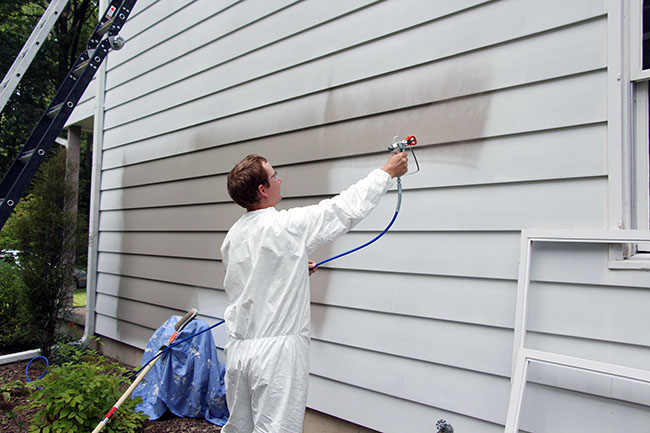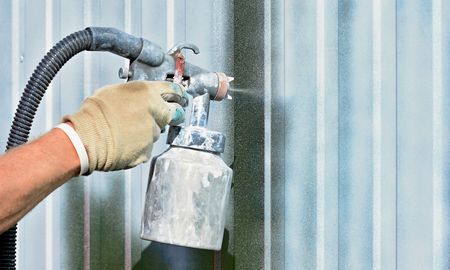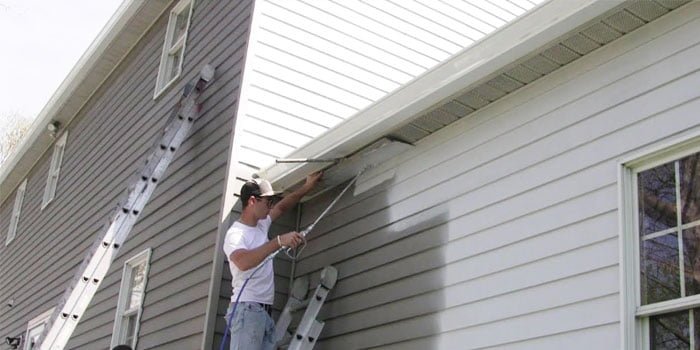
Painting aluminum siding
Aluminum siding is a popular material for home exterior because it is durable and low maintenance.
However, it may not be the most attractive material. If you are looking for a way to make your aluminum siding look better or even change its color, there are ways that you can do this on your own. Here is how:
Painting aluminum siding is a little more complex than painting wood because it is smooth and has no pores. Even though paint will stick to the metal from the outside, you still have to ensure that your surface is prepared correctly before applying any finish.
In most cases, there are only two kinds of surfaces found on aluminum siding: brushed and anodized. The latter is the most common because it has a hard finish that resists scratching and fading. Anodizing aluminum makes it more “slippery” than brushing does, so applying paint will be much more challenging.
You cannot use oil-based paints or primers on aluminum siding either.
Painting aluminum siding – Preparation and tools
Painting aluminum siding is a little more difficult than painting wood because it is smooth and has no pores. Even though the paint will stick to the metal from the outside, you still have to make sure that your surface is prepared correctly before applying any finish.
In most cases, there are only two kinds of surfaces found on aluminum siding: brushed and anodized. The latter is the most common because it has a hard finish that resists scratching and fading. Anodizing aluminum makes it more “slippery” than brushing does, so applying paint will be much more challenging.
You cannot use oil-based paints or primers on aluminum siding either because it will corrode the metal. The only type of paint that you can use is latex, which comes in aerosol spray cans and other styles. You can find exterior latex paint in light or dark colors suitable for painting aluminum siding. The only drawback is that they may fade after a few months if you don’t apply a clear topcoat to protect the base color.
When it comes to tools, all you need is a brush and some spray paints for a nice finish. The use of a roller is not recommended because it will leave your aluminum siding looking like there’s too much paint on it, which can cause even more problems in the future.

Painting aluminum siding – Techniques and materials:
• There are different ways to paint aluminum siding, but the best choice is using exterior latex paint in a spray can. To apply it properly without leaving any visible streaks on your surface, you need to follow these steps:
• Put masking tape around windows and doorframes
• Use low pressure when spraying paint on your surface
• Spray the paint in a “Z” motion several times over each section before moving to another part of your aluminum siding. This will give you better coverage and prevent any unwanted dripping or pooling from happening at one spot. After applying, let dry for 12 hours, remove masking tape very carefully without leaving any adhesive on your paint.
• Use a brush to apply a clear topcoat if necessary and let dry completely.
• If you don’t want the hassle of removing the masking tape and your exterior latex paint doesn’t come with any kind of protective coating, then it’s better for you to go over every section again after 24 hours. This will give you a longer-lasting finish that will prevent peeling and flaking.
• Don’t hold the can too close to your surface.
• Be sure to clean your tools and brushes with water before storing them away when you need to paint aluminum siding. This will prevent any type of contamination from happening on future projects.
Now that you know how to paint aluminum siding, the only thing left for you is finding a good exterior latex brand. This will greatly affect your results so make sure it’s high quality and offers excellent coverage overall. You should also choose colors properly because they can either blend well with their surroundings or look out of place depending on the situation.
Painting aluminum siding – Cleanup
When painting aluminum siding, you need to clean and prepare the surface before applying paint. This includes removing loose dirt or debris from any cracks in the sheeting, sanding down rough edges to prevent peeling of your finish coat later on, and using a metal prep product beforehand if necessary. It is best practice to use an aerosol can of paint specifically designed for metal.
If you are not able to get the siding completely clean, then it is best to use a product like Valspar’s Rust Cure, which neutralizes rust and prepares your surface for painting. This ensures that your finish coat will have maximum adhesion between the primer coat and its final color coats later on. After applying a metal primer, you can apply an oil-based enamel to your surface to protect the weather and elements, such as rain or cold temperatures.
If you are looking to refinish existing aluminum siding rather than painting it yourself, then try having a professional do the work that will ensure great results every time. This will save you time and money in the long run, as there is no need to repurchase supplies or equipment if it’s already on hand.

Maintenance for Aluminum Siding Paint
The final aspect of painting aluminum siding is maintenance. Depending on the location, climate, and exposure to the sun, your house will require occasional touch-ups or repainting at specific intervals (or more often if you live in a highly harsh area). You may also need to reapply a protective coating once per year; this depends entirely upon how often your siding is cleaned and maintained.
You can use the same paint you used for your initial coat, but if you want to alter its appearance slightly, it’s easy enough to mix in different colors when applying the second round of coats. A great idea would be a darker shade of paint on top of a lighter one, this creates a dynamic color change while still showing some of the original aluminum sidings beneath.
